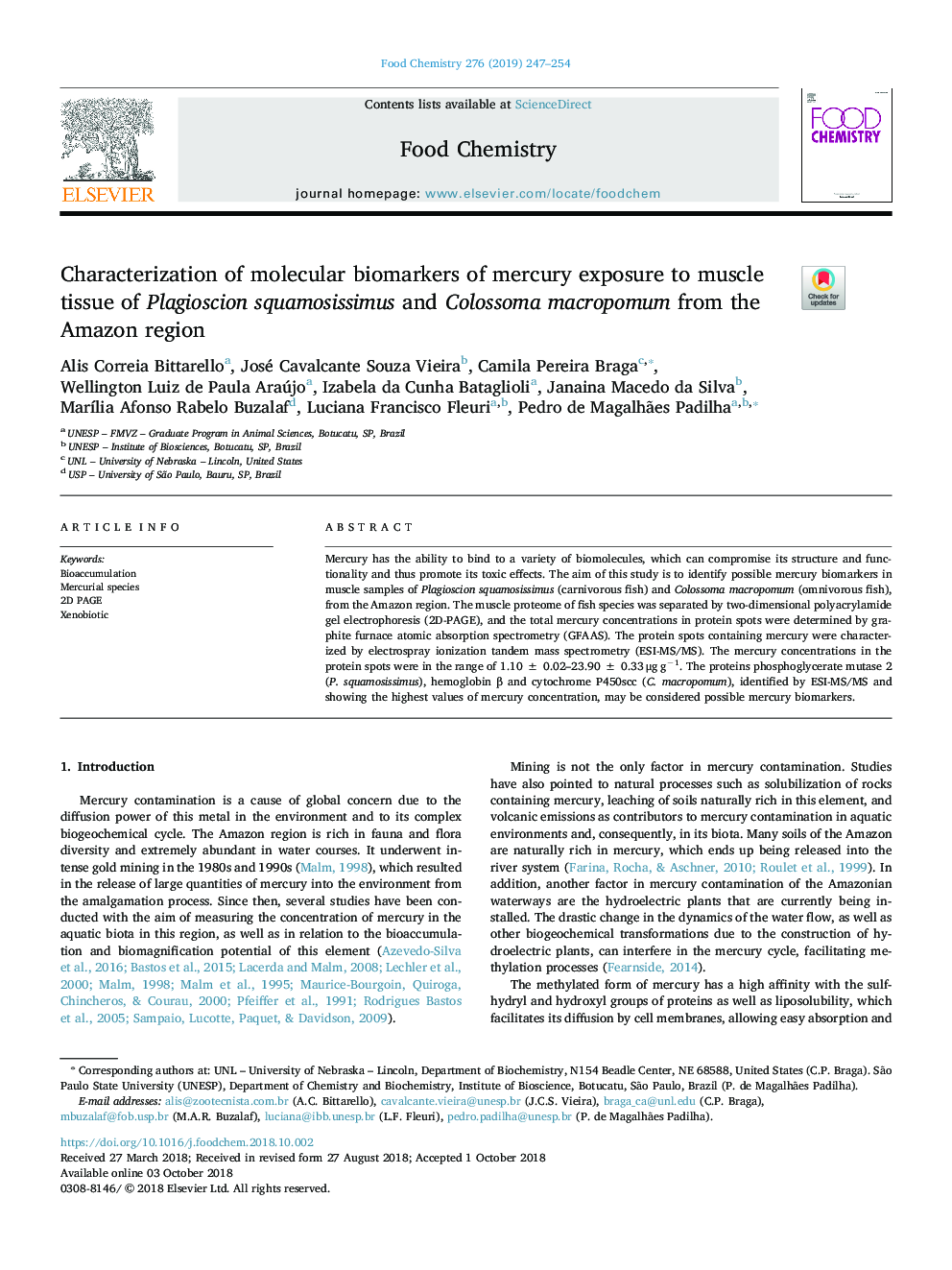| Article ID | Journal | Published Year | Pages | File Type |
|---|---|---|---|---|
| 11011791 | Food Chemistry | 2019 | 8 Pages |
Abstract
Mercury has the ability to bind to a variety of biomolecules, which can compromise its structure and functionality and thus promote its toxic effects. The aim of this study is to identify possible mercury biomarkers in muscle samples of Plagioscion squamosissimus (carnivorous fish) and Colossoma macropomum (omnivorous fish), from the Amazon region. The muscle proteome of fish species was separated by two-dimensional polyacrylamide gel electrophoresis (2D-PAGE), and the total mercury concentrations in protein spots were determined by graphite furnace atomic absorption spectrometry (GFAAS). The protein spots containing mercury were characterized by electrospray ionization tandem mass spectrometry (ESI-MS/MS). The mercury concentrations in the protein spots were in the range of 1.10â¯Â±â¯0.02-23.90â¯Â±â¯0.33â¯Î¼gâ¯gâ1. The proteins phosphoglycerate mutase 2 (P. squamosissimus), hemoglobin β and cytochrome P450scc (C. macropomum), identified by ESI-MS/MS and showing the highest values of mercury concentration, may be considered possible mercury biomarkers.
Keywords
Related Topics
Physical Sciences and Engineering
Chemistry
Analytical Chemistry
Authors
Alis Correia Bittarello, José Cavalcante Souza Vieira, Camila Pereira Braga, Wellington Luiz de Paula Araújo, Izabela da Cunha Bataglioli, Janaina Macedo da Silva, MarÃlia Afonso Rabelo Buzalaf, Luciana Francisco Fleuri, Pedro de Magalhães Padilha,
